
The municipalities of Liberia, Carrillo, Nicoya and Hojancha will stop sending garbage from their cantons to the Santa Cruz landfill. Starting in 2024, it will be taken to a plant that will convert waste into electricity.
With this change, local governments will reduce expenses for garbage collection, which will also translate into a reduction in the rate that residents pay for this service. This is what officials from the environmental management departments of the four local governments foresee.
The gasification plant is a project of Coopeguanacaste, which wants to generate electricity through gasification of non-recoverable waste.
Currently the four municipalities send garbage to the Santa Cruz municipal landfill, located in the Environmental Technology Park (PTA- Parque Tecnológico Ambiental). Each municipality pays ₡9,736.55 (about $15) per ton for final waste disposal. In addition, they usually hire another company to collect the garbage and take it to the sanitary landfill.
With this agreement, the municipalities will be responsible for taking the waste to the gasification plant, which will be located in Belen de Carrillo. The coop won’t charge for final waste disposal.
Everyone Saves
In 2021, Liberia, Carrillo, Nicoya and Hojancha produced 50,470 tons of garbage. If the plant were operating today, the municipalities would save a total of ₡750 million (about $1.2 million), which they currently spend on payments to the Santa Cruz landfill and collection companies.
Since the tons of waste generated by each canton increases annually, the savings will be greater in 2024, when the plant is scheduled to begin operating.
These savings will impact the communities with improvements in solid waste management to be defined by each municipality, local government representatives told The Voice. According to them, one of the possibilities is that it will be reflected in the rate that residents pay for the service, although they could also improve in other aspects such as expanding collection routes.
Carrillo’s environmental manager, Henry Abarca, also mentioned that more collection units could be purchased, recycling campaigns could be increased and environmental education improved.
What does a gasification plant do?
A gasification plant is a form of final treatment of solid waste. One of the products of the process that the cooperative will use is generating electrical energy.
In 2015, the Ministry of Environment and Energy (MINAE) regulated how solid waste co-incineration plants must operate. There are different forms of co-incineration, such as waste incineration, gasification or pyrolysis.
The difference between the methodologies lies in the technology used and the temperature at which the waste is burned. Each generates different quantities of gasses. For example, incineration produces more carbon dioxide (CO2) emissions than pyrolysis.
In this case, Coopeguanacaste will use a hybrid between gasification and pyrolysis. Waste is burned at temperatures between 1,000°C and 1,400°C (1,832°F and 2,552°F) and, through a thermal process, the waste is transformed into electricity.
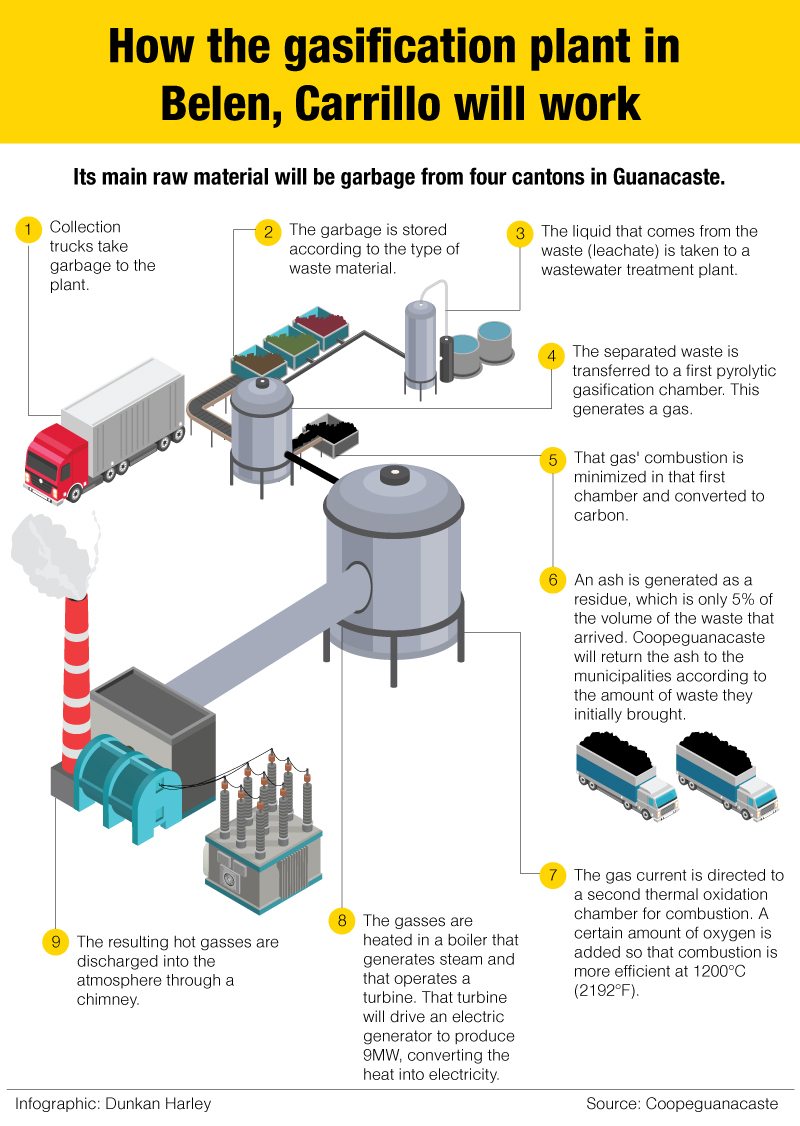
As a result of the process, some polluting gasses are generated, such as carbon dioxide (CO2), carbon monoxide (CO), dihydrogen (H2), methane (CH4), water vapor (H20) and particulate matter (ash). The coop has to control the amount of particles it emits into the atmosphere and comply with the limits established in the operating regulations for co-incineration plants.
The non-recoverable waste gasification plant project needs a minimum of 150 tons of waste to function, but Coopeguanacaste plans to expand its capacity to a maximum of 240 tons per day, which will allow it to include more municipalities in the province. According to press manager Marisol Arias, this plant would generate 169,000 tons of CO2 less per year compared to a regular sanitary landfill.
What does it mean to use non-recoverable waste? Non-recoverable waste is organic waste and waste that can no longer be reused or recycled. Although the project is designed for non-recoverable waste, neither the municipalities nor the company guarantee that other types of materials, such as recyclable items, won’t arrive.
As the environmental manager for the Municipality of Nicoya, Jorge Isaac Esquivel, explained, separation is the responsibility of each citizen, since they are the “source” that produces the waste, according to the Law for Comprehensive Waste Management.
The Municipality of Hojancha’s environmental manager, Andrea Leiva, explained that “what goes into the truck doesn’t come out. In other words, if it has already gone into the truck and is mixed together, because they didn’t separate it at the source, it’s going to stay there that way.”
The project already has permits approved from the Environmental Technical Secretary (SETENA for the Spanish acronym). Coopeguanacaste’s generation and project manager, Erick Herra, explained to The Voice that the project is in a stage of validating the technology that will be used, in order to find out if there are more efficient implements.
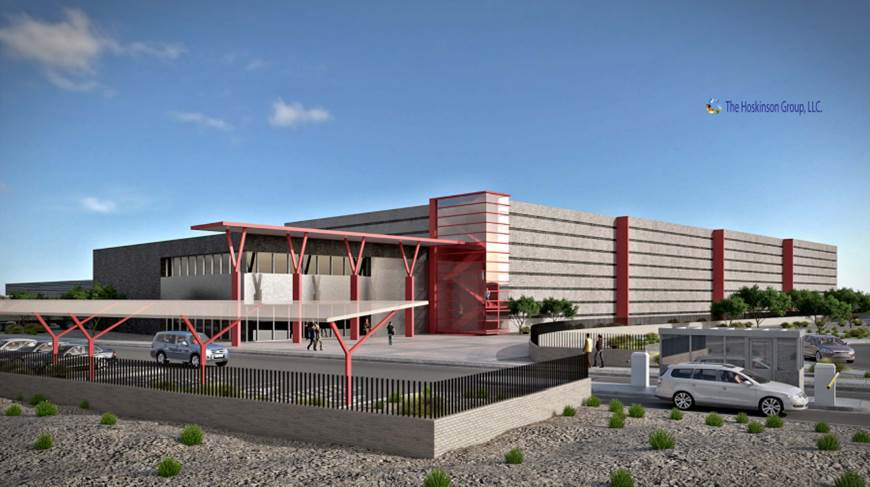
With this municipal waste gasification plant, Coopeguanacaste hopes to produce 8% more electricity than it currently sells, reaching a total of producing 77% themselves. They buy the rest from the Costa Rican Institute of Electricity (ICE), Consortium of Electric Cooperatives and Coopelesca. Image: Coopeguanacaste
Is this a good environmental option?
The municipalities and Coopeguanacaste believe that this project will provide a solution to the problem of solid waste management in the province.
This proposal does have some environmental advantages over a dump. For example, the cooperative estimates that this plant will produce 169,000 fewer tons of CO2 per year. In addition, the process has by-products such as producing electrical energy and even a kind of ash that can be used for road construction, sidewalks or aggregates for embankments.
However, this type of process, like sanitary landfills, is in last place according to the hierarchy for comprehensive waste management. This hierarchy is the order in which waste should be treated for good environmental management.
According to this, in the first place, generating waste should be avoided, then its generation should be reduced, the waste generated should be reused, then recycled, and then given a correct treatment before final disposal in landfills or in this type of plant.
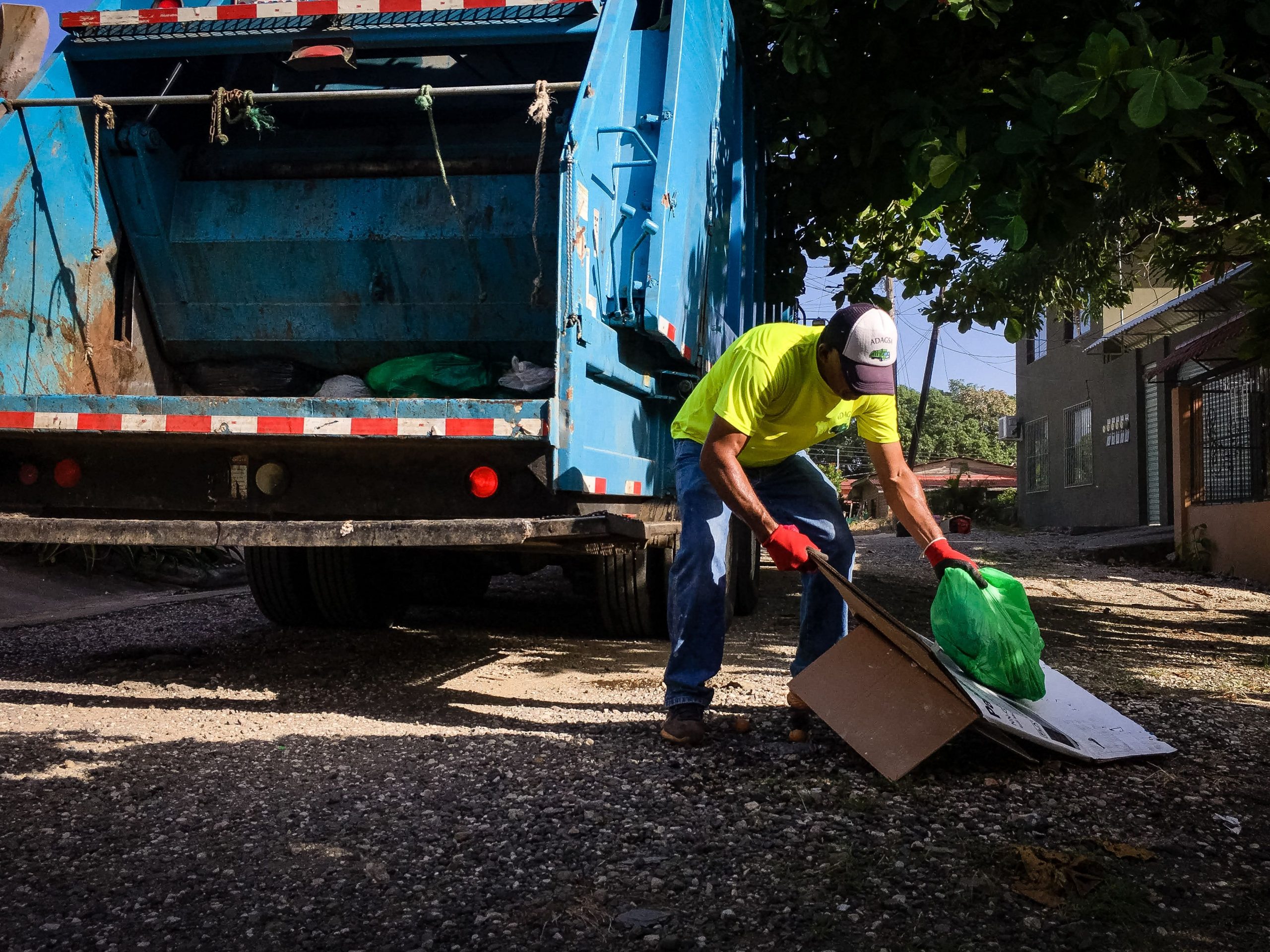
Some of the benefits that residents would have are a lower cost for garbage collection, an increase in the frequency of service and more recycling and environmental education campaigns. Photo: Cesar Arroyo
According to Esquivel, another waste treatment is the “zero waste approach.” This is a different option from landfills and co-incineration plants. It consists of users reducing, reusing and recycling their own waste, in addition to making their own compost with organic waste.
Esquivel thinks that more environmental education among the population is needed to be able to adopt this approach.
Due to a cultural issue, I see this approach as difficult, at least in the short to medium term. The current culture doesn’t follow that line. Perhaps in the next economically active generation, they will already have other principles and other environmental values,” he commented.


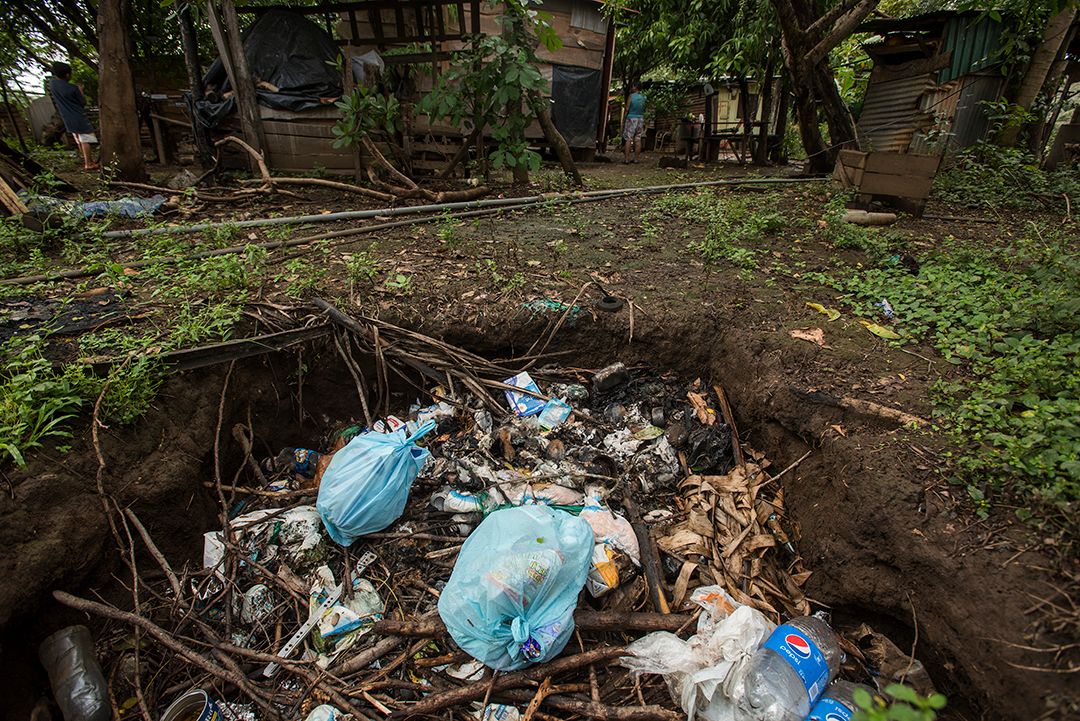
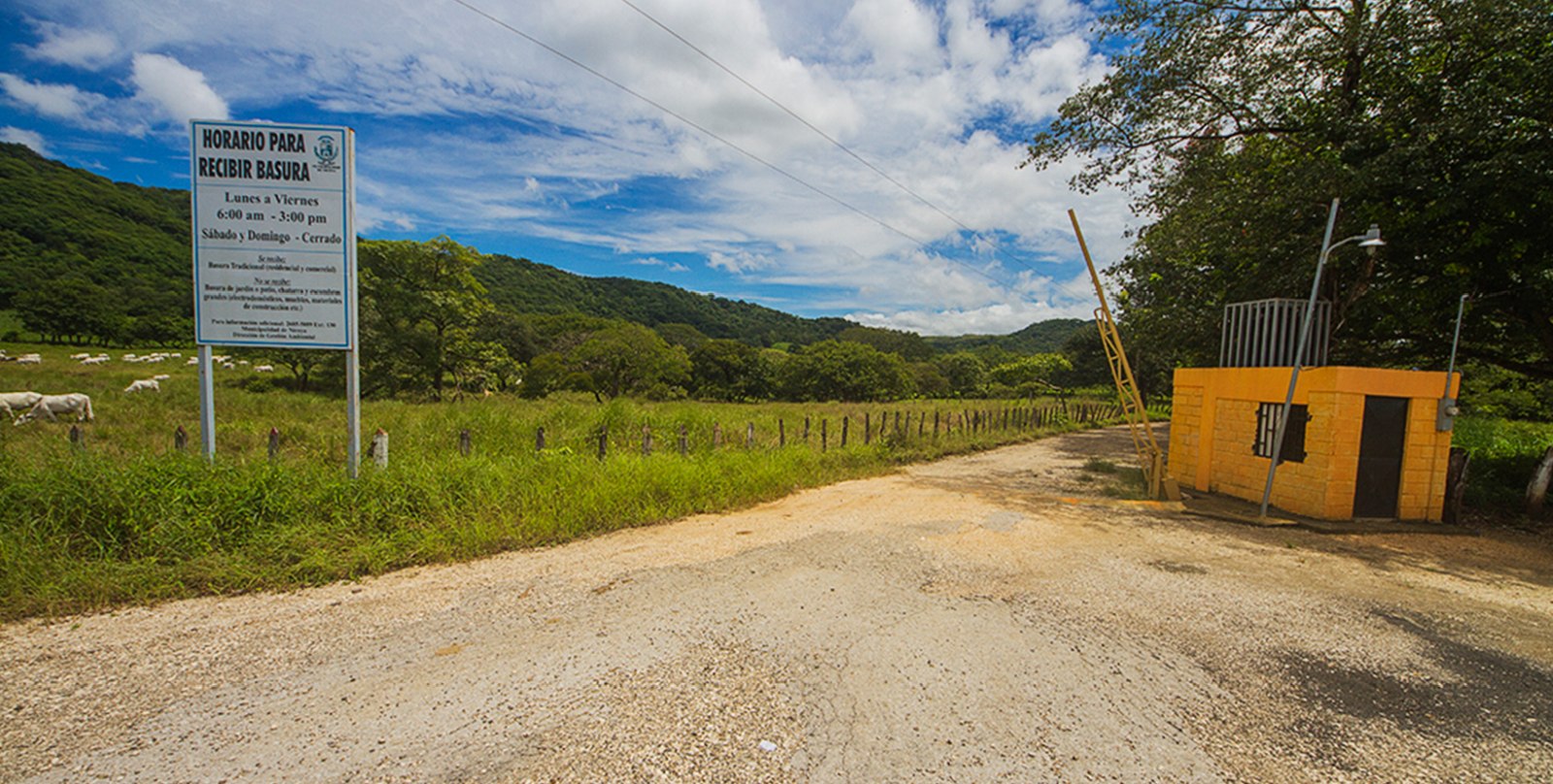
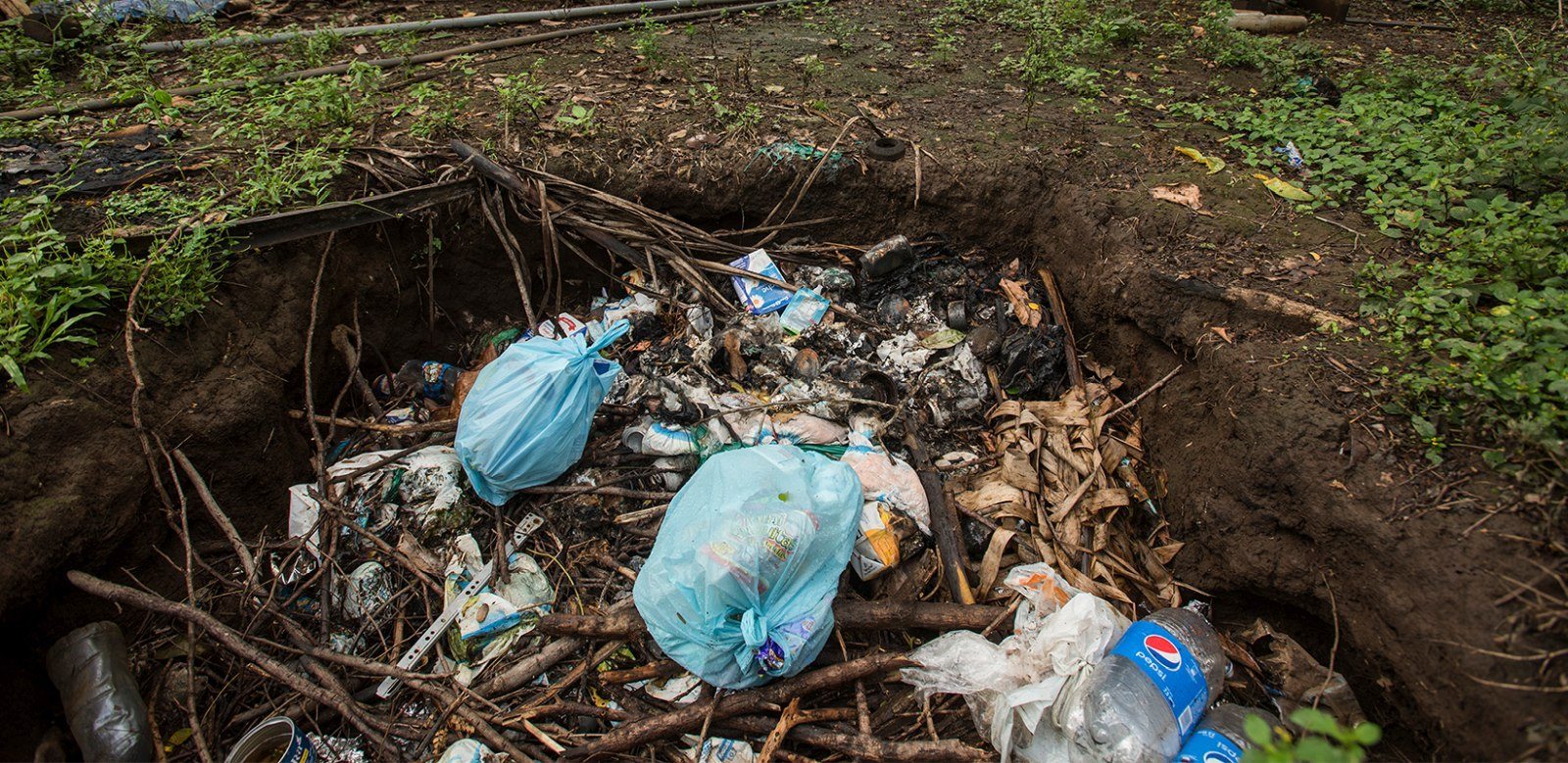
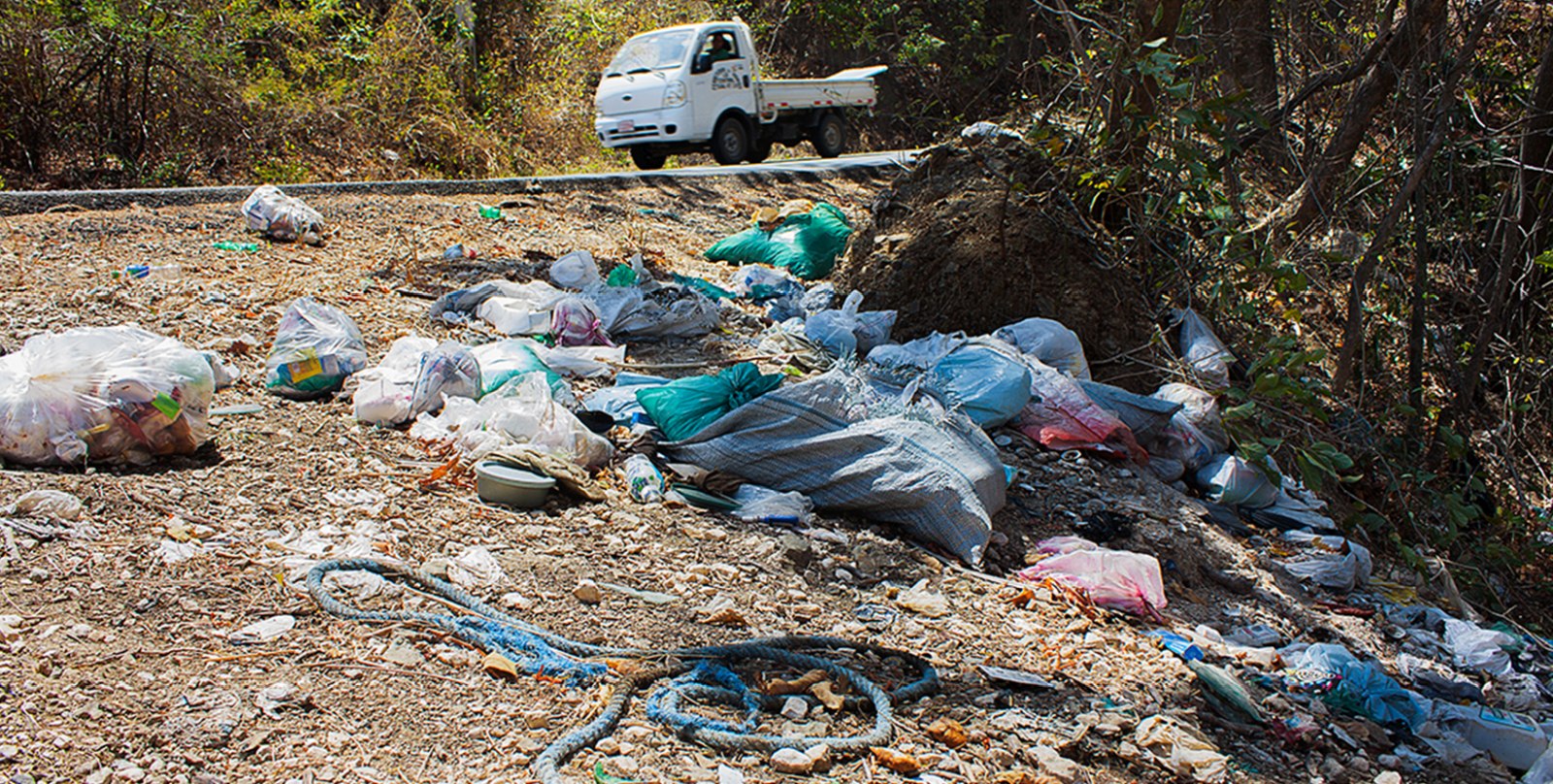

Comments